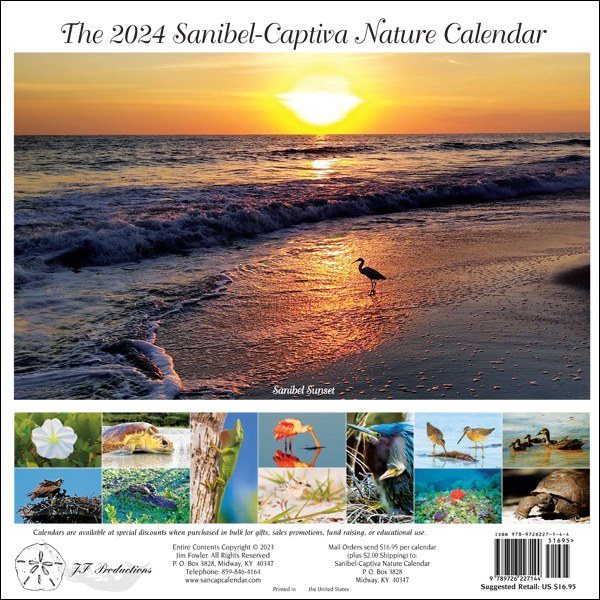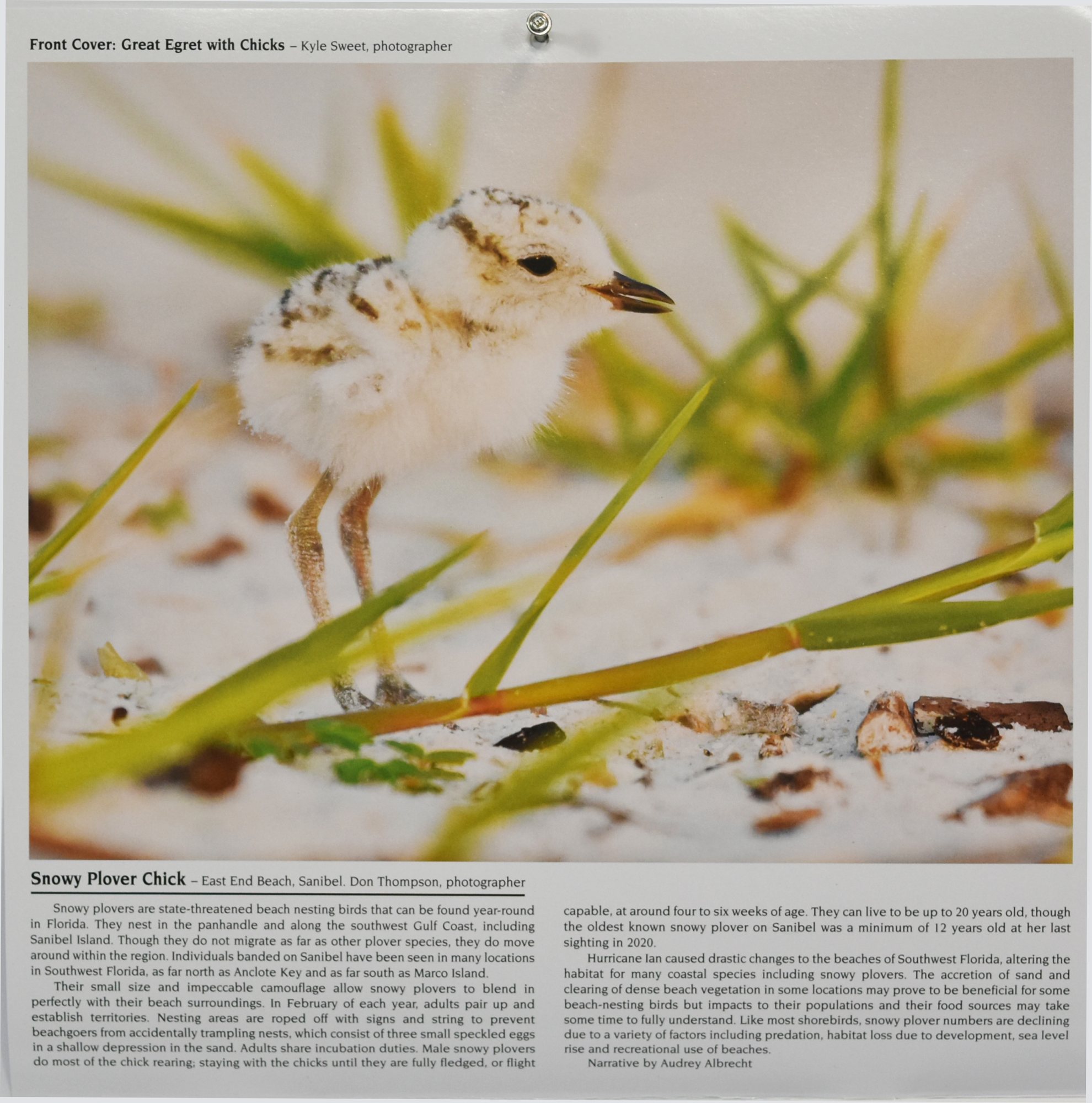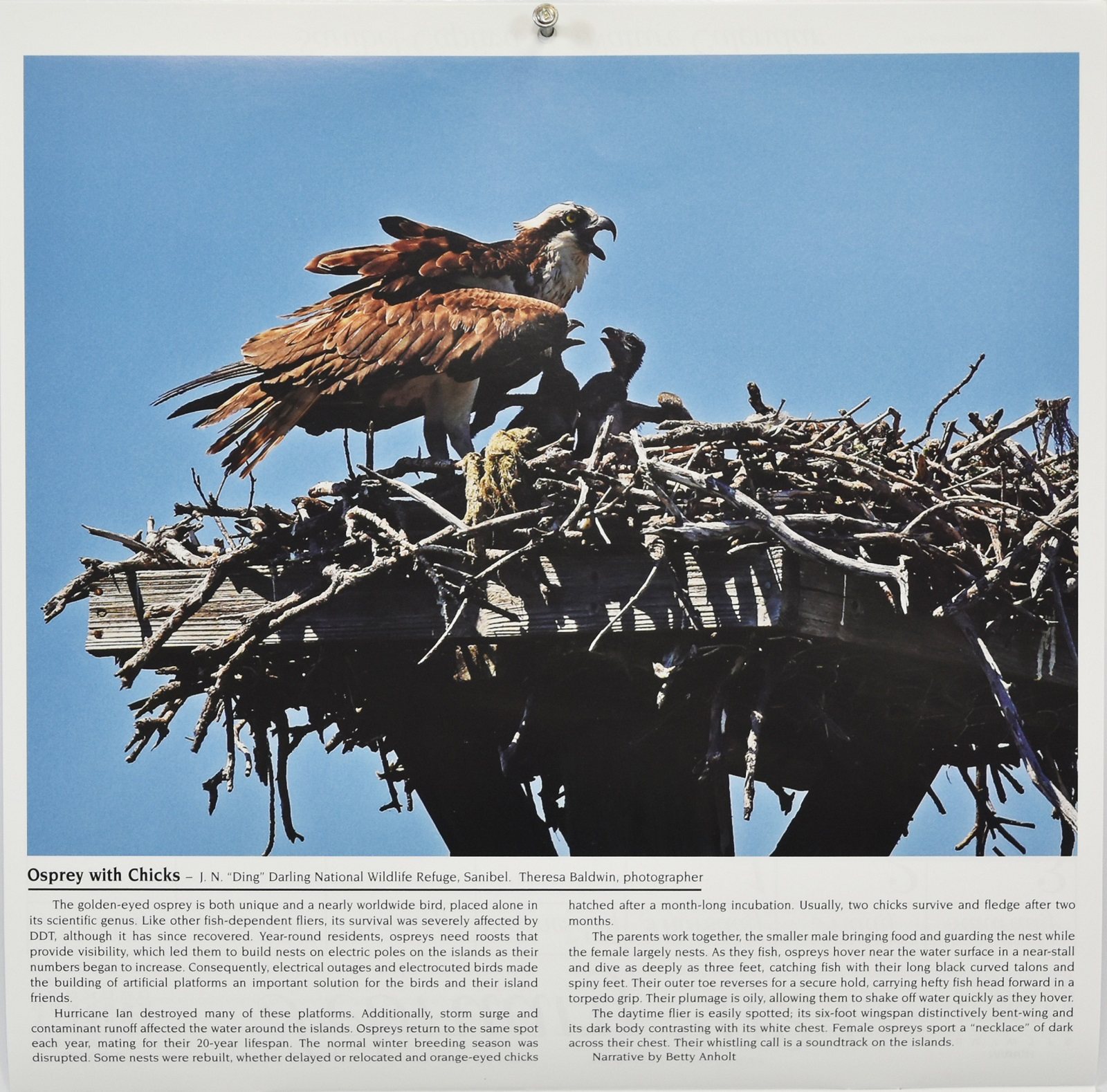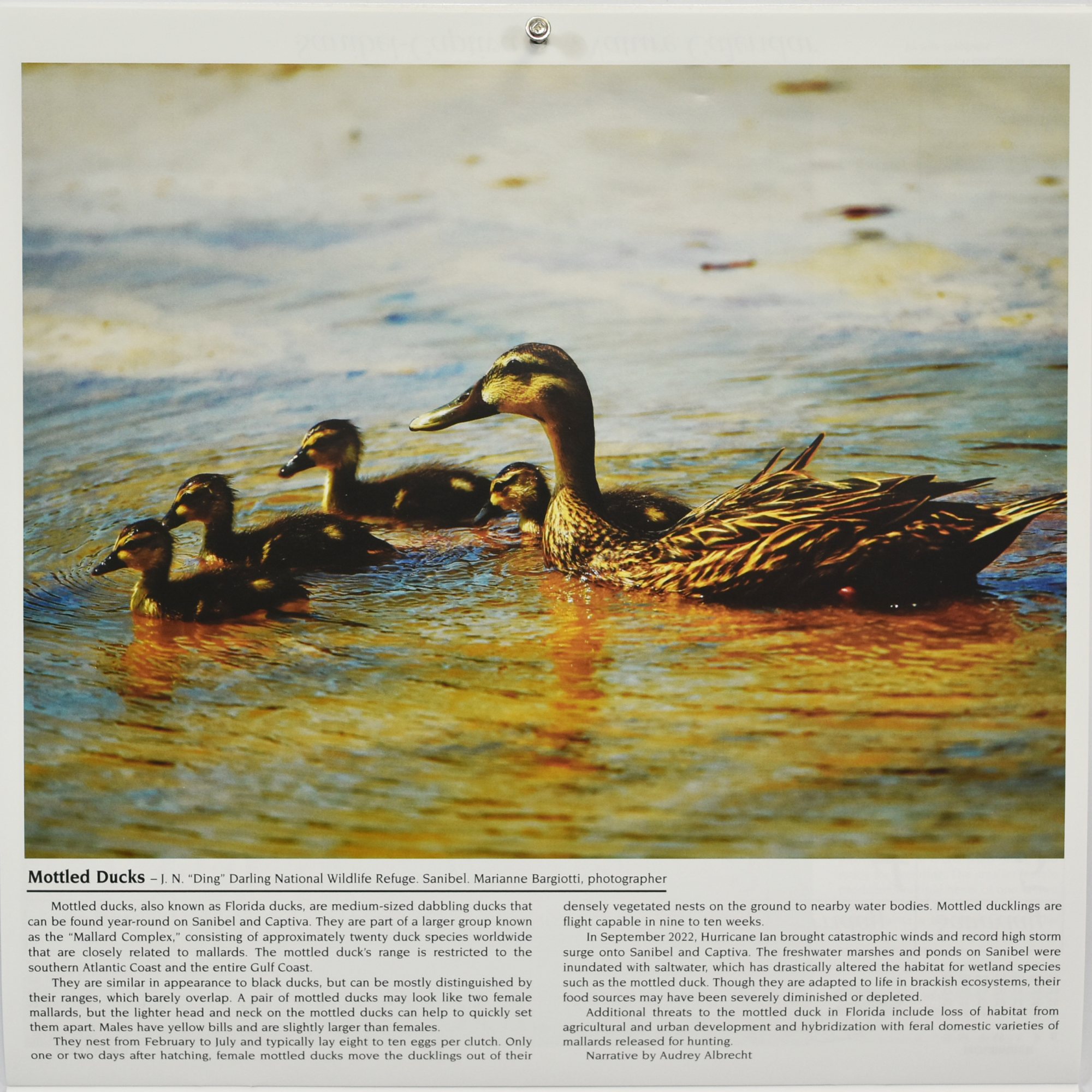The 2024 Sanibel-Captiva Nature Calendar
05/17/2023 at 18:26 pmThe 2024 Sanibel-Captiva Nature Calendar
After a long and suspenseful wait, we are finally getting the 2024 Sanibel-Captiva Nature Calendar in! This is a special post-Hurricane Ian edition of the calendar. They highlight the effects of the hurricane on the islands’ most common birds, plants, and animals. The photos for the calendar were taken before Ian, but the narratives were written four months later. The Sanibel-Captiva Conservation Foundation has conducted several surveys to gather information about the degradation of the island’s freshwater lakes and sloughs. Most of the freshwater lakes and sloughs have salinity levels as high as the waters in the Gulf of Mexico. It will take years of rainfall to flush out the seawater. Until that happens the animals and plants that depend on the island’s freshwater interior will struggle to survive. This year’s calendar theme is Sanibel Reborn, showcasing how Sanibel Island and Captiva are going through a rebirth after Ian.
Many months of work are put into creating this calendar; the people involved always produce breathtaking art for us to enjoy and captivating stories for us to connect with the nature we see every day. The artist whose shells are featured on each page is Sue Stephens. Sue’s shell paintings and sketches have appeared in local and national publications. This year’s cover photo is a Great Egret nesting with two chicks at Audubon Venice Rookery Park, photographed by Kyle Sweet. Sanibel Island’s Great Egrets nest within Tarpon Bay from February to August. In the 2022 nesting season the US Fish and Wildlife biologists found ten Great Egret nests at Tarpon Bay Keys. The effects of Hurricane Ian on the rookery in Tarpon Bay have yet to be determined. The photograph for each month presents the results of the photographer’s skills, knowledge of their subjects, and hours of patience in the field. The writers of each narrative are experts in their fields and are local to the Southwest Florida area.
For the month of January, the photograph features a Snowy Plover Chick by Don Thompson. It was taken at East End Beach on Sanibel Island. The Snow Plover narrative was written by Audrey Albrecht. Snowy Plovers are state-threatened beach-nesting birds that are found year-round in Florida. They can be found nesting along the panhandle and the Southwest Gulf Coast, including Sanibel Island. Hurricane Ian caused massive changes to the beaches on Sanibel, altering the Snowy Plovers’ habitat. The accumulation of sand and the clearing of beach vegetation may be beneficial to some beach-nesting species but the impacts on population and food supplies will take more time to completely understand.
The month of March features a photo of Osprey with Chicks by Theresa Baldwin, taken at J.N. “Ding” Darling National Wildlife Refuge on Sanibel Island. The Osprey narrative was written by Betty Anholt. The Golden-Eyed Osprey is both unique and known worldwide. This is a fish-dependent bird, and its survival was severely affected by DDT, however it has been recovering. Ospreys need roosts that provide a large amount of visibility, this leads them to build nests on the island’s electrical poles. Electrical charges and electrocuted birds resulted in the building of artificial platforms for the birds on the island. Hurricane Ian destroyed many of the artificial platforms and the storm surge and contaminated runoff polluted the freshwater on the island. However, these birds still prevailed, whether it was moving their chicks or rebuilding entirely the chicks hatched after a month of incubation.
June features a photo of a Juvenile American Alligator by Kyle Sweet at The Sanctuary Golf Club on Sanibel Island. The narrative of the alligator was written by Charles LeBuff. This alligator surfaced from beneath a mat of duckweed. Alligators are fast growing and under ideal conditions, this juvenile can reach a length of six feet in five more years. Alligators were impacted by Hurricane Ian when Sanibel Slough, freshwater wetlands, was flooded by seawater. This may influence the survival of the alligator over time in this area. Unlike the American Crocodile that lives on Sanibel also, the alligator cannot survive in high amounts of salinity for very long periods of time.
A photo of Mottled Ducks from J.N. “Ding” Darling National Wildlife Refuge on Sanibel Island taken by Marianne Bargiotti is featured for the month of November. The narrative about the Mottled Duck was written by Audrey Albrecht. Mottled Ducks or Florida Ducks are medium-sized ducks that can be found year-round on Sanibel Island and Captiva. Mottled Ducks nest from February to July and lay around eight to ten eggs. Only two short days after hatching mother Mottled Ducks have their ducklings move out of the vegetated nests on the ground and into bodies of water. These ducklings are flight capable after nine to ten weeks. Hurricane Ian brought winds and storm surge onto Sanibel and Captiva, the freshwater marshes and ponds were filled with saltwater. This caused the Mottled Duck’s habitat to be altered and their food supply diminished.
The 2024 Sanibel-Captiva Nature Calendar features a wide variety of breathtaking photographs of nature being reborn on Sanibel Island. From baby chicks to blooming flowers this calendar shows the beauty of Sanibel and Captiva while explaining how natural disasters and human development are affecting our most treasured and precious birds, plants, and animals. Inside the calendar includes a list of all 2024 Atlantic Hurricane Names, special days for 2024 and 2025, and more information about the Conservation Organizations of Sanibel, Captiva, and Southwest Florida. Take a piece of Sanibel Island home with you when you come to Southwest Florida in 2024!






